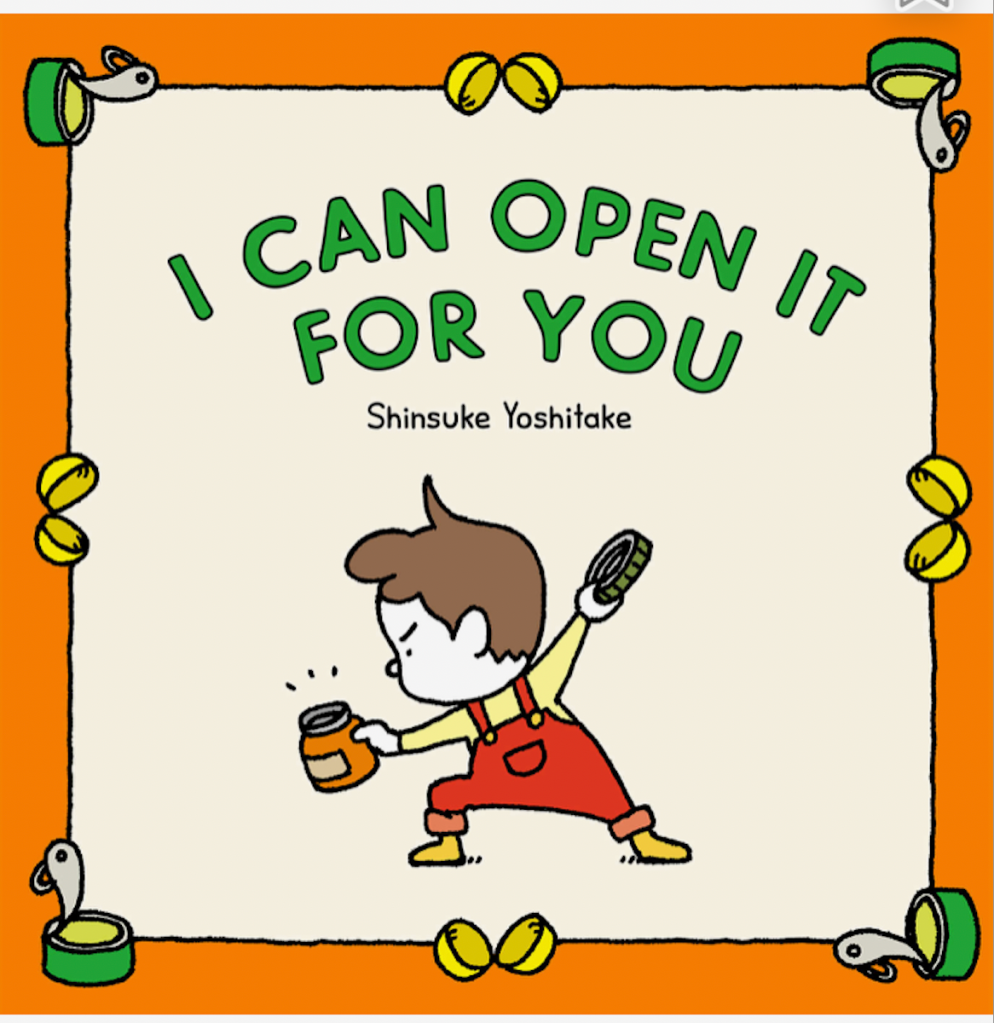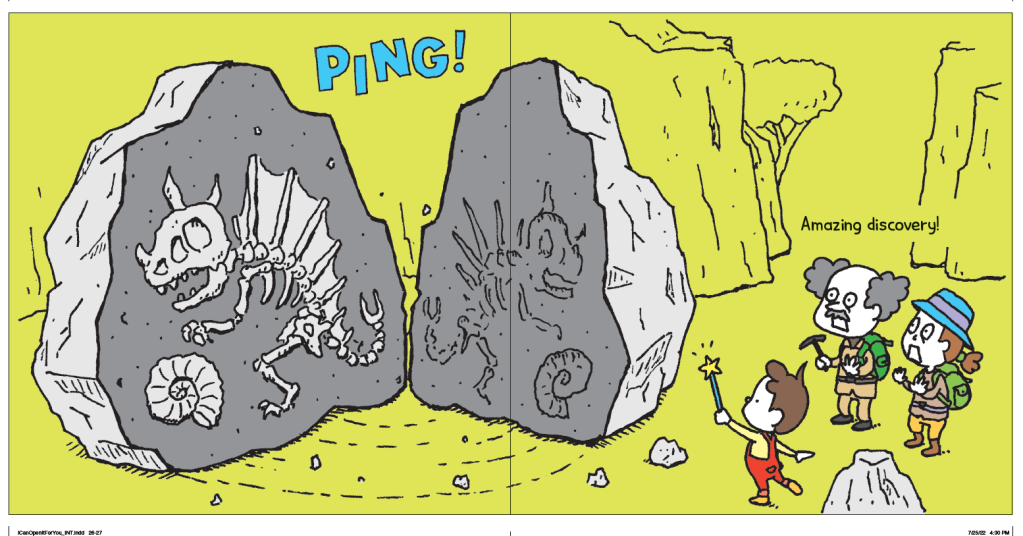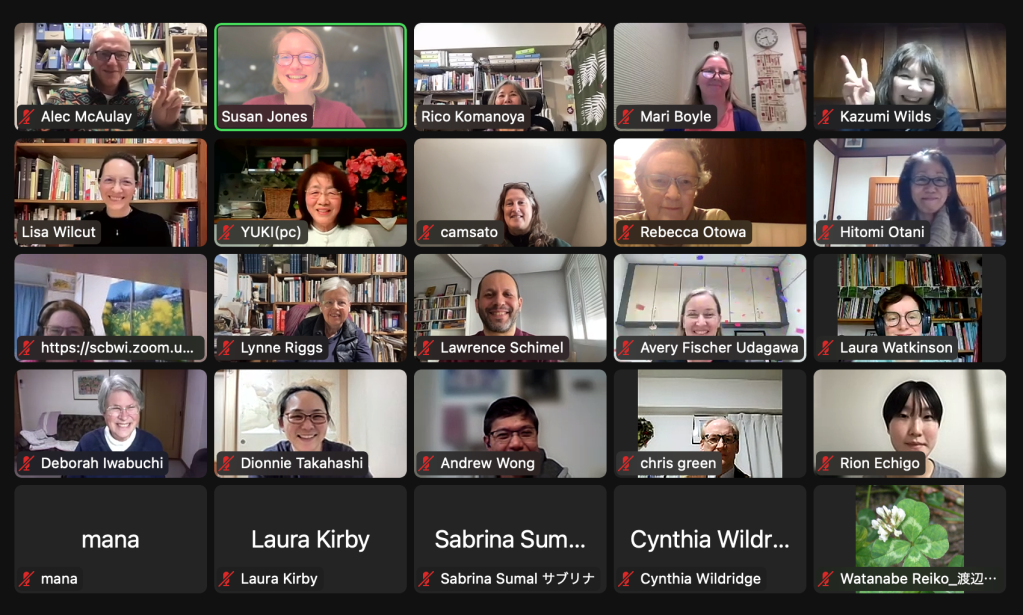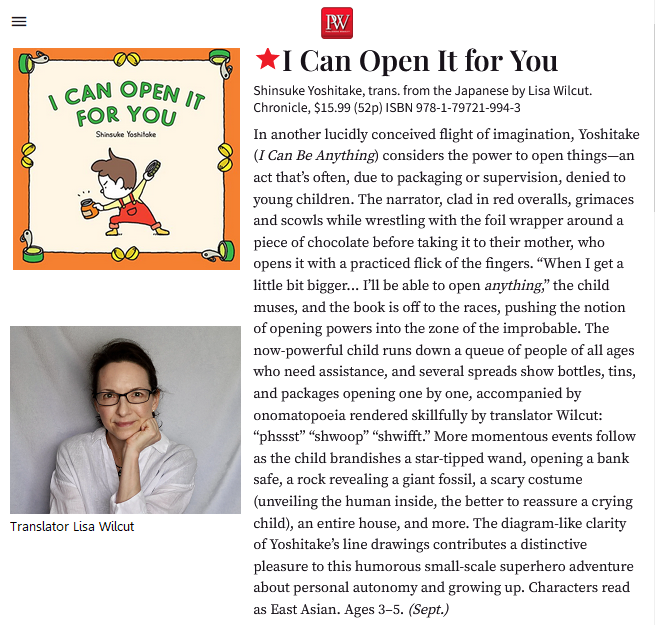By Deborah Iwabuchi in Maebashi, Japan
On March 22, 2024, twenty-seven people from around the world joined us on Zoom as SCBWI Japan hosted Lisa Wilcut to talk about her translation of a new book by Shinsuke Yoshitake. Yoshitake has published many children’s books, most of which follow a single pithy theme and appear in a similar format. They are familiar to and loved by Japanese readers young and old, and make great gifts.
Things got interesting right away, when moderator Susan Jones, our SCBWI Japan translator coordinator, began by asking Lisa about the title. The beautifully alliterated Japanese title is Akira ga akete ageru kara, or “Akira will open it for you.” The main character is a little boy named Akira, and akete ageru is a polite way of offering to open something for someone. Since small Japanese children often refer to themselves by their names, the original title is an idiomatic phrase used by Japanese children Akira’s age.

The title presented by US publisher Chronicle Books is I Can Open It For You, while UK’s Thames Hudson published it as I Can Open That! In fact, it turns out that the name of the protagonist—Akira—is not used at all in either of the English versions of the book. This, we learned, is true of all Yoshitake’s English translations—rather than changing the name of the character to one familiar to readers, the text is translated without it. I might note here that, through text and illustrations, Yoshitake’s books actually lend themselves to this solution to the eternal issue of what to do about names in translation.

Since Lisa did the translation in American English and was not involved in the adjustments made to the British version, I Can Open It For You was the one we heard about.
For the next part of the session, Kazumi Wilds, our Regional Illustrator Coordinator, read the Japanese version, followed by Lisa reading the English. Little Akira wants to grow up and be able to open things for himself and, more importantly, for others, rather than always being the one who gets helped. He thinks about all the things he might be able to open, both real and fantastic.
With each item he thinks about opening, Akira has a sound that goes with it—the sound of it opening. Which brings us to what Lisa described as the elephant in the room—onomatopoeia, a form of language that is very common in Japanese and wreaks fear in the heart of the J to E translator. How common is it? Well, I cannot spell “onomatopoeia” without looking it up, but the word in Japanese is simply gi’on, the same word used for “sound effect.” If used sparsely, these “sound effect” words can often be worked around in a translation, but for this book, onomatopoeia was at the heart of it.
Rico Komanoya, who runs Compass Rose Editions, is a book packager, rights agent and translator who bought the rights for I Can Open It For You. She also has experience translating Yoshitake’s books. With this one, though, she decided she needed help working with all of the onomatopoeia, and connected with Lisa to do the translation.
I bought the Kindle version of this book ahead of time and kind of zapped through the onomatopoeia. When Lisa read for us, though, the effect was delightful and each word perfectly matched the item being opened. They were a combination of sound words—some you may have heard and some that Lisa made up for the occasion, like “fwipp” and “poomp,”and words that matched the situation, like “groan” “rip” and “sparkle.” This is definitely a book that lends itself to reading aloud.

Lisa told us how she researched the sound words for this project—by going around opening things. It sounded like fun, until I imagined myself opening up mountains of cans of sardines and bottles of corked champagne before I could figure out how to spell what they sounded like.
In the second half of the book, though, Akira opens things that are enormous and spectacular, situations for which sounds can only be imagined. For these, Lisa chose short words that kept the reader’s attention on the unusual scenes, but also sounded great when read aloud. One she said she still wasn’t convinced had worked was “Ping!” for the sound of a boulder opening to reveal a fossil of a dinosaur skeleton. But looking at Akira using his magic star wand to do it, it seemed just about right to me.

Although not completely in the translator’s realm, the sound words were all drawn by hand—illustrations themselves, so the English sound words had to be drawn and then inserted into them. When the translator chose the word, she also needed to consider the space in the illustration available to it. You can see here that “Ping!” fits neatly between the two halves of the boulder.

This session with Lisa was helpful in terms of discussing translation technique for an issue that can be an ordeal for J to E translators, but I also came out of it with a number of good non-technical takeaways.
- Connections are important. Lisa was connected to Rico Komanoya through a non-kid-lit channel. As translators we never know where our next job is coming from, but we should bear in mind that it will most likely come from someone we know, or a contact of someone we know who recommended us to them.
- Lisa talked about how much time it took to translate I Can Open It For You compared to the amount of text that was involved. This made sense after hearing about the work she did to come up with the onomatopoeia!
- Name the translator issues. Yoshitake’s books famously do not name their translators on the cover or even on the title page. You’ll find “Lisa Wilcut” in tiny print on the copyright page at the back of the book. We were, however, heartened to hear that, the Publisher’s Weekly notice (see below) included her name, and that libraries carrying the book are listing both the author and translator in their catalogs.

Lisa Wilcut is a writer, editor, and translator based in Yokohama. I Can Open It For You was her first picture book translation. She has been recognized by the Agency of Culture Affairs of the Government of Japan for her literary translation, and her creative fiction has appeared in Tokyo Weekender and the anthology Structures of Kyoto.












